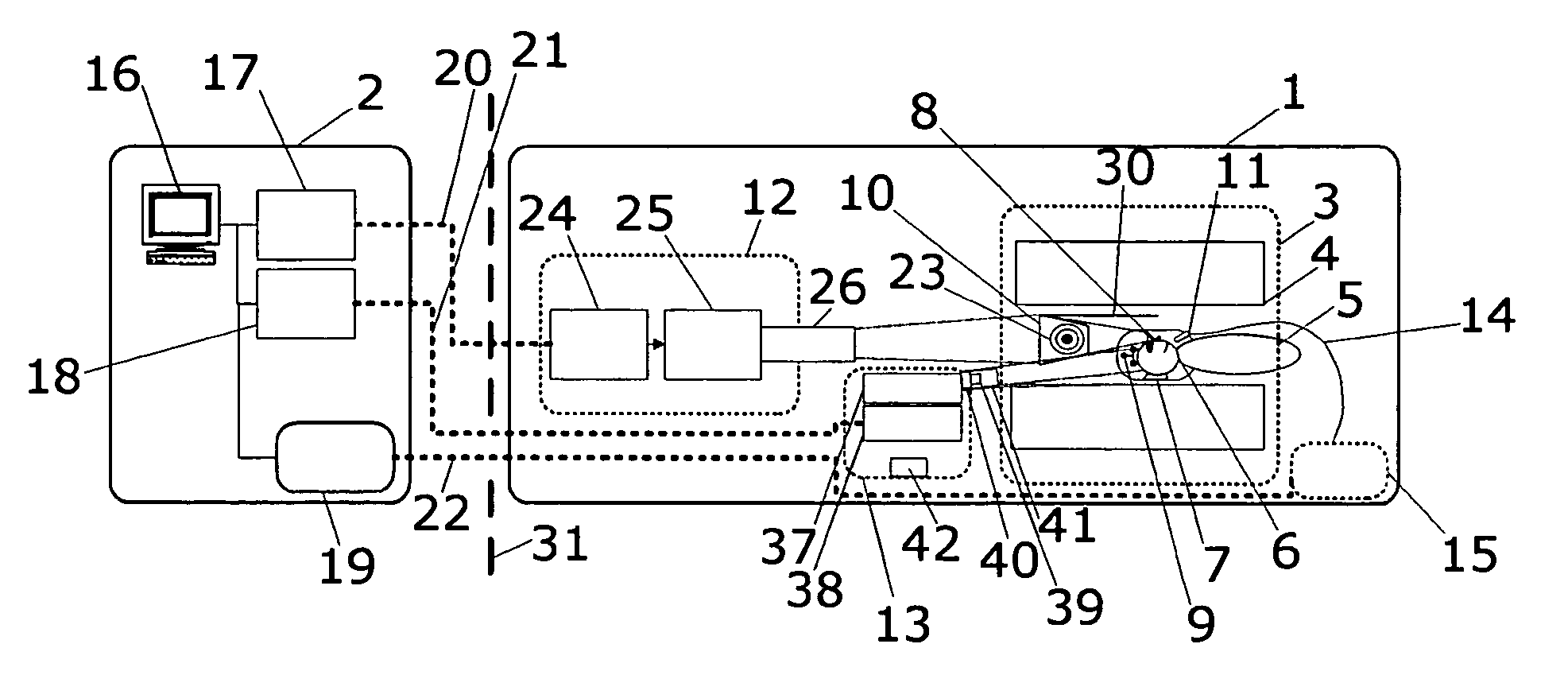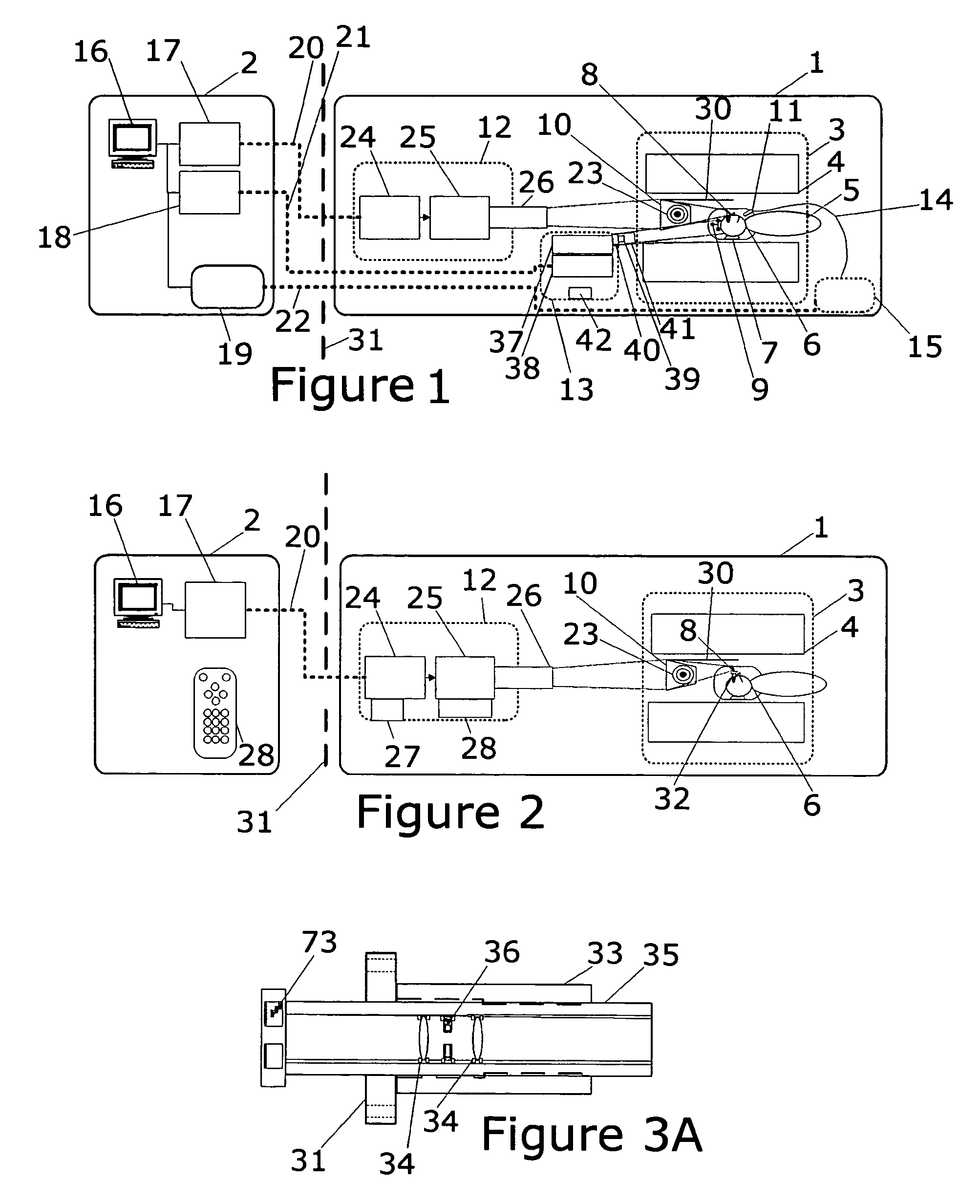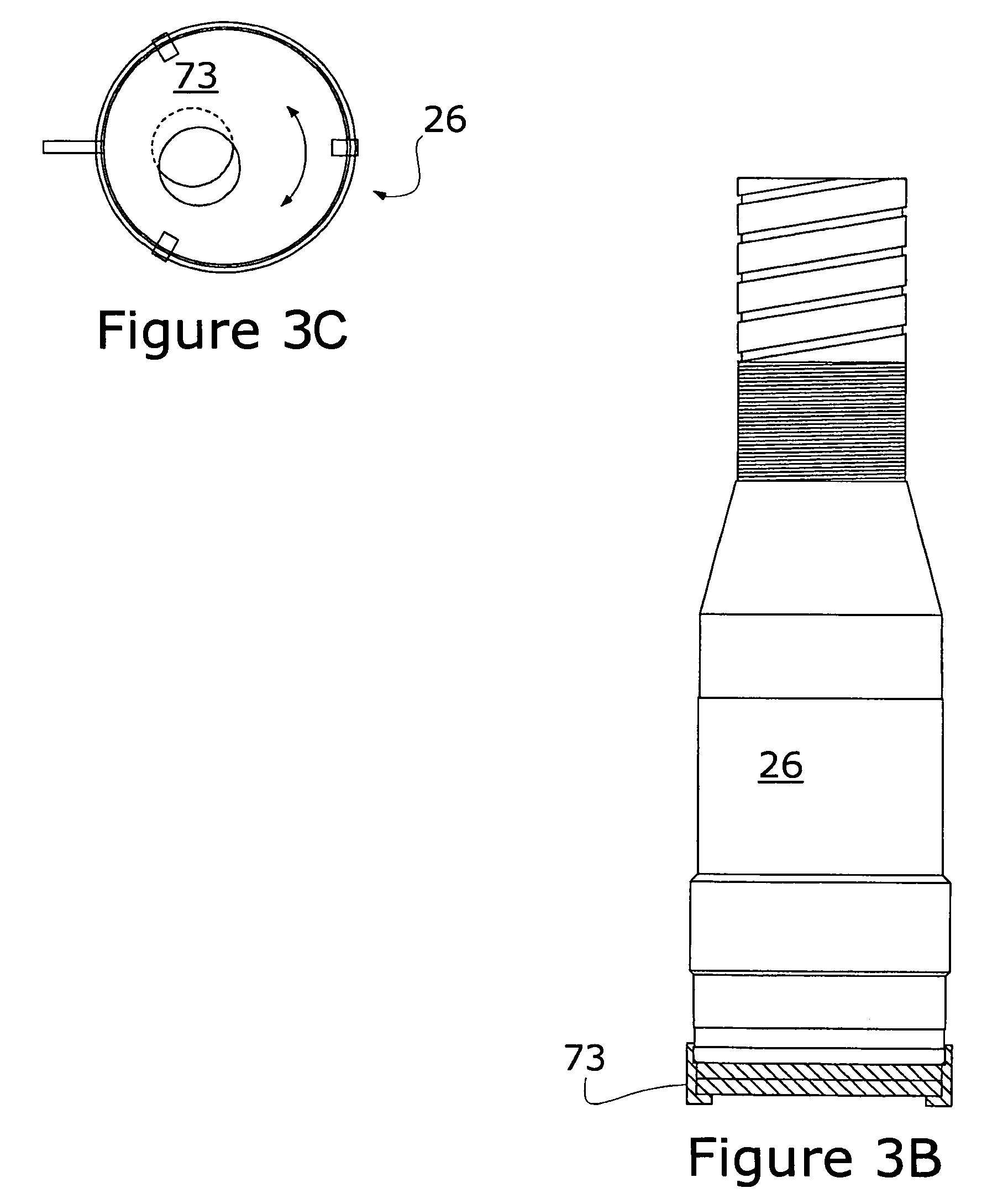Magnetic resonance imaging having patient video, microphone and motion tracking
a technology of magnetic resonance imaging and patient video, applied in the field of magnetic resonance imaging having patient video, microphone and motion tracking, can solve the problem of not being able to monitor the movement, and achieve the effects of preserving the quality of the image, improving dynamic display, and fast (microsecond rise time) display
- Summary
- Abstract
- Description
- Claims
- Application Information
AI Technical Summary
Benefits of technology
Problems solved by technology
Method used
Image
Examples
Embodiment Construction
[0038]Reference will now be made in detail to the preferred embodiment of the invention. FIG. 1 provides to overview of all the components of the MRI system according to the present invention. The three sub-systems of the MRI system according to the present invention include a digital projection system, a movement monitoring system, and a microphone system can be used together, in other in combinations or individually. The equipment involves conventional components in the MRI magnet room 1 and the MRI control room 2, which components need not be discussed in detail herein. All signals pass through digital fiber optic cables (20, 21 and 22) through a penetration panel or wave guide 31.
[0039]The MRI Digital Video Projection System of the present invention is shown in FIG. 1-5. The system includes a viewable rear projection screen 23 that a patient can see typically by viewing it after the image is reflected from a mirror or prism 8. Other projection surfaces (e.g. front projection scr...
PUM
 Login to View More
Login to View More Abstract
Description
Claims
Application Information
 Login to View More
Login to View More - R&D
- Intellectual Property
- Life Sciences
- Materials
- Tech Scout
- Unparalleled Data Quality
- Higher Quality Content
- 60% Fewer Hallucinations
Browse by: Latest US Patents, China's latest patents, Technical Efficacy Thesaurus, Application Domain, Technology Topic, Popular Technical Reports.
© 2025 PatSnap. All rights reserved.Legal|Privacy policy|Modern Slavery Act Transparency Statement|Sitemap|About US| Contact US: help@patsnap.com



